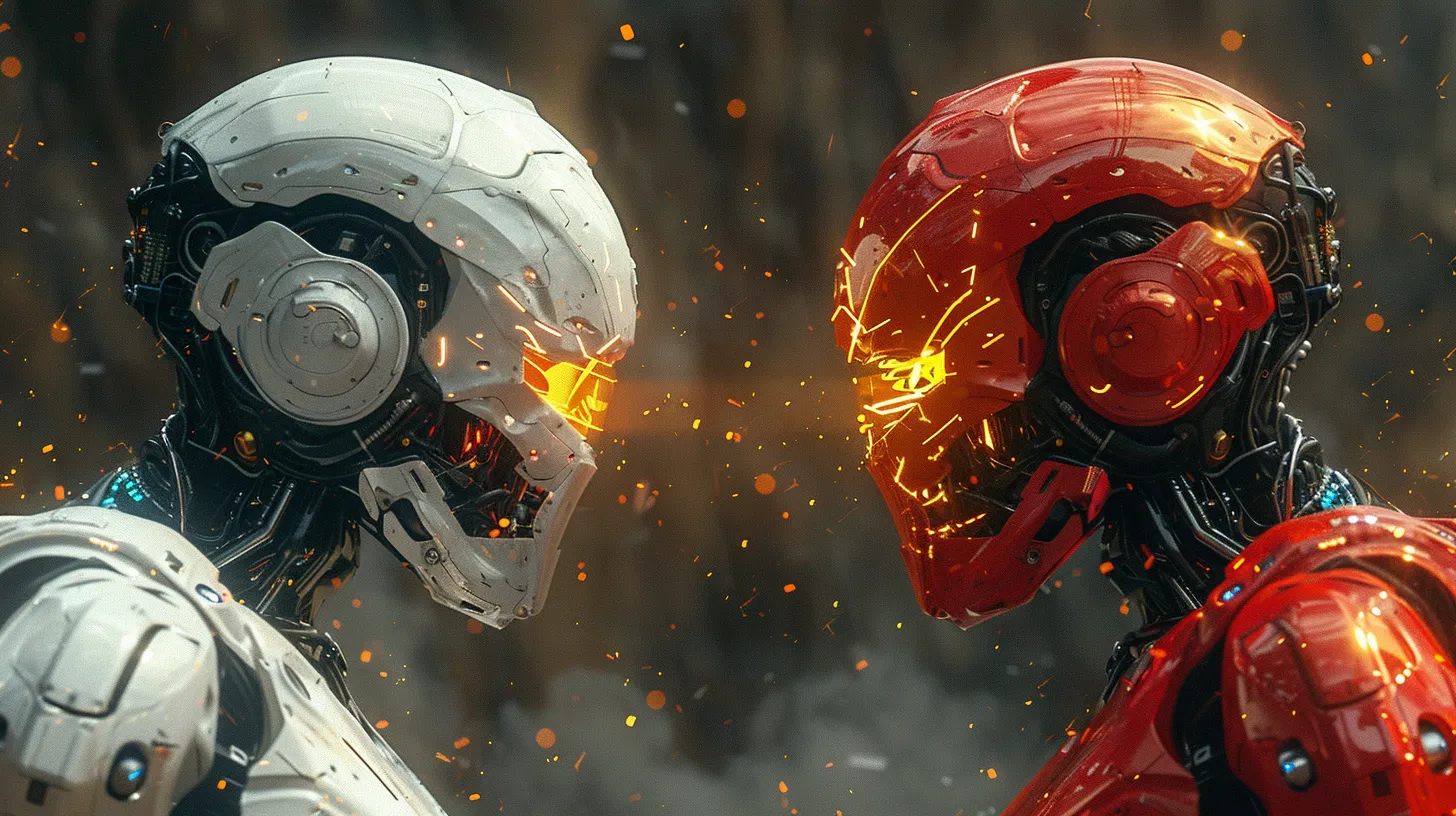The AI Chip Wars: Shifting Sands in Silicon Power

In the sprawling epic of artificial intelligence’s rise, a gripping subplot of technology and commerce is unfolding: the AI Chip Wars. This is not merely a battle over silicon, but a profound transformation in how we equip the engines of AI. Traditionally dominated by graphics processing units (GPUs), the landscape is now peppered with specialized AI accelerators—a shift driven by burgeoning needs for efficiency and specialized processing power.
A New Generation of Chips
Nvidia, long celebrated for its robust GPUs, continues to rake in profits from its generative AI ventures. The firm’s revenues have soared as titans like Microsoft and Meta voraciously consume its latest offerings, such as the H100 chip, a $30,000 marvel at the heart of cutting-edge AI applications. Yet, even as these chips fly off the shelves, a change looms. These same tech behemoths, alongside others such as Google and Amazon, are crafting their custom silicon. This strategic pivot not only threatens Nvidia’s dominance but also underscores a broader industry trend: the move towards tailor-made AI hardware.
Custom AI chips, like Google’s Tensor Processing Units (TPUs) or Amazon’s Inferentia, offer a dual promise: optimized performance for specific AI tasks and significant cost reductions. Google’s TPUs, for instance, are integrated into its expansive cloud infrastructure, streamlining operations from simple data crunching to complex AI training tasks. Similarly, Amazon’s Inferentia aims to make AI inference more economical, delivering high throughput at lower costs.
Intel and the Race to the Top
Intel, a behemoth in the semiconductor industry, has not stood idly by. At the Intel Vision 2024 conference, the company unveiled its Gaudi 3 AI accelerator, aimed at dethroning Nvidia with superior capabilities in training large language models and handling multimodal AI tasks. Intel’s assertive roadmap highlights its ambition to be the world’s No. 2 AI systems foundry by decade’s end, signaling its commitment to a rapidly evolving market.
The Vertical Integration Approach
Companies like Microsoft and Meta are not just developing chips; they’re integrating them into a broader ecosystem. Microsoft’s Azure Maia chip and Meta’s MTIA ASICs reveal a trend towards vertical integration where chip design is closely aligned with software and system architecture. This bespoke alignment, tailored to the unique demands of their vast data centers, allows these firms to maximize efficiency and performance, reducing reliance on external suppliers like Nvidia.
Global Strategies and Local Dynamics
The AI chip market is also witnessing geopolitical influences, particularly from China. Chinese firms, led by initiatives like those from Intellifusion, are developing AI chips that sidestep U.S. sanctions and offer competitive performance at a fraction of the cost of more established players. Such movements not only alter the competitive landscape but also reflect the growing importance of AI hardware in national tech strategies.
The Promise of 2D FeFETs
While the tech giants battle it out, a quiet revolution is happening at the intersection of materials science and AI hardware. At the forefront of this innovation are 2D ferroelectric field-effect transistors (FeFETs), devices that promise to bring AI closer to mimicking the human brain’s neural structure.
A recent study has demonstrated groundbreaking results. These FeFETs showcase multi-level data storage capabilities and can mimic crucial neural processes such as excitatory and inhibitory postsynaptic currents, paired-pulse facilitation, and spike-timing dependent plasticity.
What’s more, these devices are incredibly energy-efficient, consuming sub-femtojoule per spike, and operate about ten thousand times faster than human synapses. This combination of speed and efficiency opens up new possibilities for AI applications, especially in areas where power consumption and processing speed are critical, such as mobile AI and edge computing.
Towards Neuromorphic Computing
The integration of memory and processing in the FeFET device represents a significant step towards neuromorphic computing. By mimicking the neural structure of the human brain, these systems can process and remember information in a manner similar to humans. This integration helps overcome the von Neumann bottleneck, a limitation of traditional computing architectures where memory and processing are separated, causing inefficiencies.
The practical applications of 2D FeFETs are vast, ranging from complex AI tasks like visual data processing to potentially handling dynamic and interactive tasks such as real-time language translation, autonomous vehicle navigation, and personalized AI-driven medical diagnostics.
The Future of AI Hardware
As the AI chip wars escalate, innovations like 2D FeFETs will play a crucial role in defining the future of AI hardware. These advancements promise to enhance the capabilities of AI systems while significantly reducing their ecological footprint.
The development of 2D FeFETs represents a confluence of physics, engineering, and computational science that may well define the next era of artificial intelligence. As such, this technology will be a critical area to watch as the AI landscape continues to evolve.
The Future Landscape
As AI continues to permeate various sectors, the demand for more specialized, efficient, and cost-effective AI chips will only escalate. This demand drives innovation but also ushers in a more fragmented market where no single player holds all the cards. Companies are increasingly likely to choose or build hardware tailored to their specific needs, a trend that could democratize access to AI technologies but also intensify the silicon arms race.
In this high-stakes environment, the AI chip wars are more than just corporate battles; they are a harbinger of the future of computing. As these chips become faster, smarter, and more integrated with AI systems, they will not only transform the technology landscape but also the very way we interact with and benefit from artificial intelligence. The chips of today are setting the stage for the AI of tomorrow.